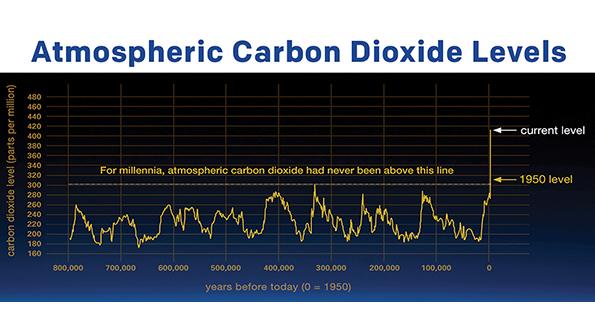CAPA Perspective: Balancing Existential And Existence Threats

Finding a balance between survival of the aviation and travel industry and survival of the world is not an easy equation. One is an existential threat, and the other is a threat to our existence; one is very short term, the other is short term and long term.
The existential threat is about travel and tourism, which in 2019 accounted for about one in 10 jobs around the world and one in five of every new job, according to the World Travel & Tourism Council. In a lot of cases, from Greece to the Pacific Islands, they are even more reliant on travel. As a large part of that traveling inevitably is by air, the aviation system is inextricably linked to travel.
On the other hand, the threat to our existence is real and seemingly inevitable, unless we act. The emission of carbon dioxide from human activity is increasing more than 250 times faster than it did from natural sources after the last ice age, according to NASA. Carbon dioxide levels in the atmosphere are at unprecedented levels, and rising, creating a climate emergency.
For years, CAPA has been assessing the key issues affecting the future of the air transport industry and environment sustainability is foundational, but also a constraint on long-term growth prospects. The important thing to remember, as the industry goes into a regrowth period, is that the constraint is not going to go away. It is still a critical part of the whole aviation equation.
The positive is that aviation emissions will be well below 2019 levels for some years to come. Long-haul international, for example, is going to be very slow to return. The estimates are that probably 50% of long-haul widebody operations will return during this year at maximum. Long-haul widebody operations accounted for about 40% of total emissions in 2019. By taking half of that out of the equation, there will be a 20% reduction in emissions, which is a very significant amount. It is quite possible that pressure will increase to keep emissions at the levels they are in 2021, which would reset the base for growth.
However, carbon emissions are not going to reach zero simply by people flying or driving less. What’s really needed to change things significantly is a holistic approach. It includes zero carbon ways to produce electricity, to manufacture things, to grow food, to keep our buildings cool or warm, and to move people and goods around the world. The focus needs to be on the radical changes needed for transportation, buildings, industry, culture and politics. There is no single breakthrough or silver bullet.
As the post-COVID recovery occurs, the aviation and travel industry is going to have to make, and to be seen making, some much bolder steps, both to produce new solutions and to show that progress has been made. And governments, businesses and investors will increasingly pressure the air transport industry to do just that.
One of the key underlying issues here is that the focus for governments should remain on how to reduce CO2 emissions rather than on short-sighted and ineffective measures such as new taxes. Incentivizing the creation of new sustainable aviation fuels is a real step in the right direction.
